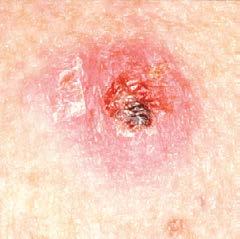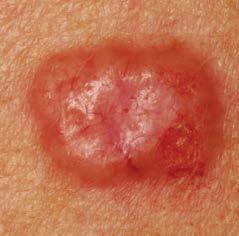
3 minute read
New Rules for Marketing Medicare Plans
Beginning September 30th, no longer will those annoying commercials selling Medicare Advantage plans be allowed to be so misleading. This crackdown comes following what the Health and Human Services Secretary Xavier Becerra calls “misleading marketing schemes by health insurance companies.”
These commercials to sell you on Medicare Advantage plans; an alternative to getting your Medicare benefits directly from the government along with a Medicare supplement and a Medicare drug plan, have gotten out of control. No longer will it be allowed for them to show a Medicare logo in a way that could make someone believe they are representing the federal government.
Advertisement
These Medicare Advantage plans have grown in popularity as an alternative to Original Medicare. Federal officials estimate that by the end of 2023 more than half of Medicare’s 65 million enrollees will be enrolled in a Medicare Advantage plan. These plans can be either an HMO or a PPO and are offered by private insurance companies.
Medicare Advantage plans include the required Medicare prescription drug coverage and then add additional benefits that Original Medicare doesn’t cover such as an annual routine vision exam and eyewear allowance, routine hearing test and hearing aid benefit, over the counter health and wellness products, dental benefits and more. You can see why they are growing in popularity.
According to AARP, Becerra said the new rule “would prohibit overly general ads about the Medicare Advantage program that often tends to confuse and mislead eligible individuals.” The new regulation requires that an advertisement for Medicare Advantage specify the name of the plan, limits the use of the name Medicare and prohibits images of Medicare cards and the CMS logo (Centers for Medicare/Medicaid Services.
How Can I Tell If I Have Skin Cancer?
There are three main types of skin cancer: basal cell carcinoma, squamous cell carcinoma, and melanoma. Because each has many different appearances, it is important to know the early warning signs.

Look especially for change of any kind. Do not ignore a suspicious spot simply because it does not hurt. Skin cancers may be painless, but dangerous all the same. If you notice one or more of the warning signs, see a board-certified dermatologist right away, preferably one who specializes in diseases of the skin.
What Patients Need To Know
1. Everyone needs to perform a self-skin exam once a month.
2. Melanoma can appear anywhere on the skin, including the palms/soles, under your nails, and places...for most, have never seen the light of day (genitalia). For this reason, it is important to look everywhere. Lock the bathroom door, get out a hand mirror, and check, it could save your life.
Actinic Keratosis

An actinic keratosis (AK) is a crusty, scaly growth caused by damage from exposure to ultraviolet (UV) radiation. An AK is considered a precancer because if left alone, it could develop into a skin cancer. AKs are the product of a lifetime accumulation of UV damage and typically appear on areas most commonly exposed sun, such as the backs of the hands, forearms, face, neck, and scalp.
Basal Cell Carcinoma

Basal cell carcinoma (BCC) is the most frequently occurring form of all cancers, with more than 4 million cases of diagnosed in the U.S. each year. BCCs may look like open sores, red patches, pink growths, shiny bumps, or scars. Any skin lesion that doesn’t heal, or bleeds with even gentle trauma, such as drying with a towel, is concerning for a BCC.
Squamous Cell Carcinoma
Squamous cell carcinoma (SCC) is an uncontrolled growth of abnormal cells arising in the epidermis, the skin’s outermost layer. SCCs often look like scaly red patches, crusty bumps, warts, or elevated growths with a central depression. SCCs may appear suddenly and some forms are tender to touch. They can become disfiguring and sometimes deadly if allowed to grow. More than 1 million cases of SCC are diagnosed each year in the U.S., which translates to about 115 cases diagnosed every hour. Incidence has increased by 200 percent in the past three decades in the U.S., and more than 15,000 Americans die each year from this type of skin cancer.
Melanoma
Melanoma is a very dangerous form of skin cancer. Melanoma is caused mainly by intense, occasional UV exposure (frequently leading to sunburn), especially in those who are genetically predisposed to the disease. An estimated 178,560 cases of melanoma are diagnosed in the U.S. each year and is fatal for an estimated 9,320 of these patients. Fortunately, if melanoma is recognized and treated early, it is almost always curable.
3. What to look for: ABCDEs, and an ugly duckling
A - Asymmetry: If I draw a line down the middle, do the sides match?
B - Border: Is there a nice crisp border, or does the mole melt into the surrounding skin?
C - Color: Moles should be one color, one shade of brown. Is there a variety of shades or additional colors, such as black, red, white, or blue?
D - Diameter: Any mole larger than 6mm, ie the head of a pencil eraser, has a higher risk of becoming melanoma.


E - Evolution: Has it changed?
F - The Ugly Duckling Sign: Most people have a “signature mole,” their own personal mole appearance and architecture. Is there a mole that seems different from all the others?
4. Everyone needs a full body skin exam by a board-certified dermatologist once a year, more frequently if you have a family history of skin cancer, a personal history of skin cancer, or live in an area with substantial sunshine.










